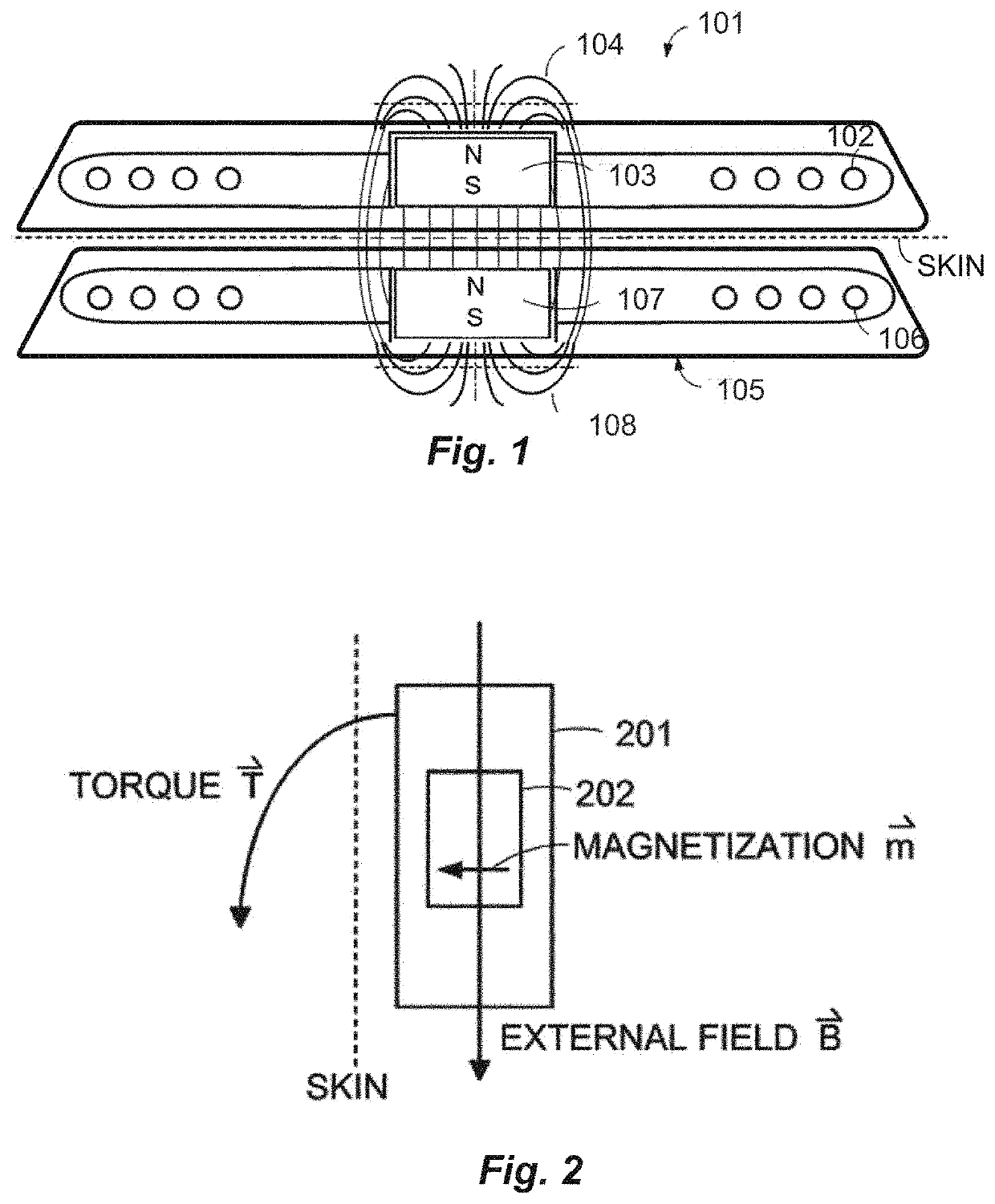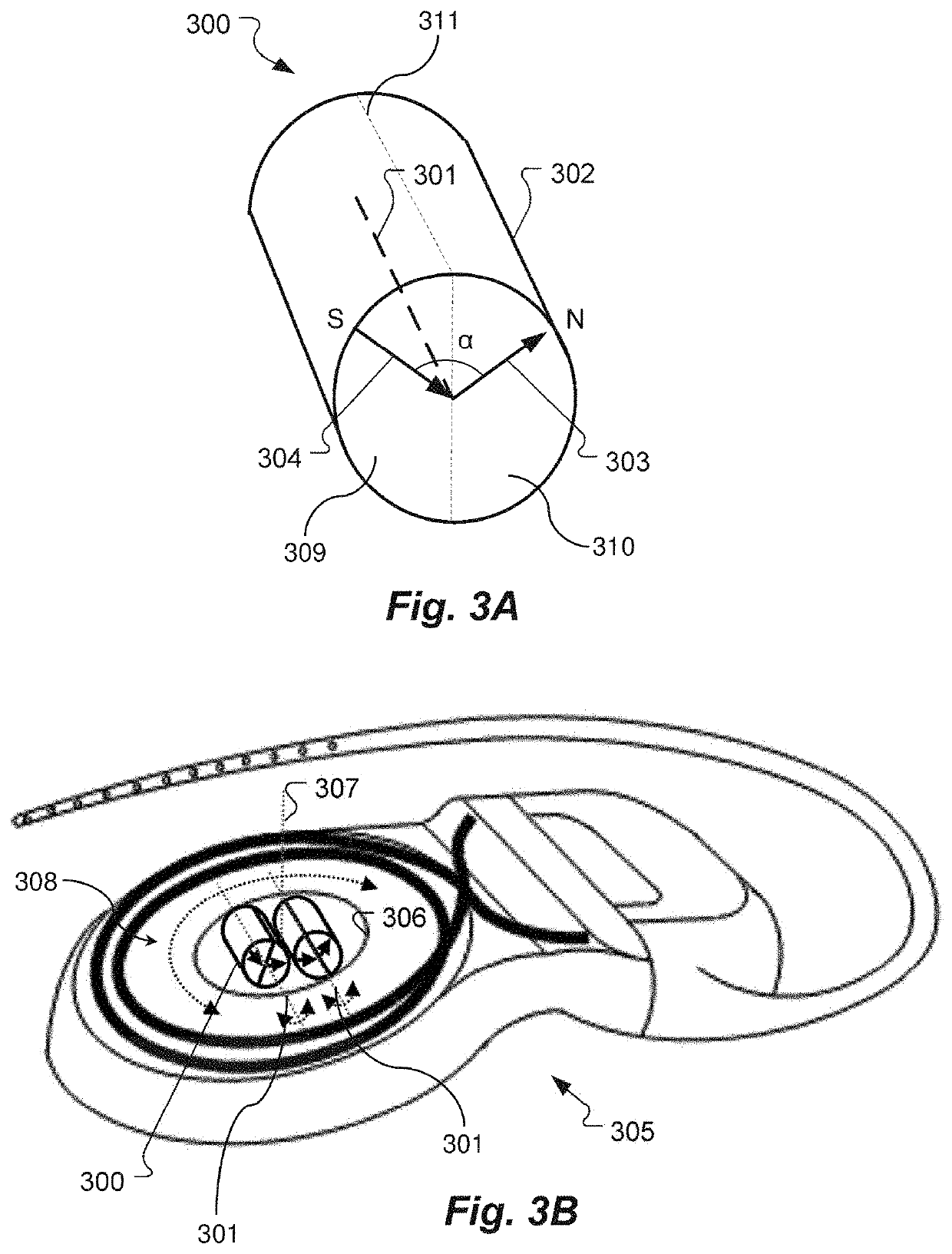Holding Magnets and Magnet System for Implantable Systems Optimized for MRI
a technology applied in the field of holding magnets and magnet systems for implantable systems optimized for mri, can solve the problems of not being strong enough to hold the external transmitter device in the proper position, damage to adjacent tissue in the patient, and magnetic resonance imaging, etc., to achieve favorable magnetic flux, reduce the mass of the implant magnet, and improve the effect of magnetization
- Summary
- Abstract
- Description
- Claims
- Application Information
AI Technical Summary
Benefits of technology
Problems solved by technology
Method used
Image
Examples
second embodiment
[0011]According to the invention, the implant magnet “as a whole” has an “overall magnetic dipole moment” which is at least approximately parallel to the outermost surface, or in other words, approximately parallel to the skin in the implanted state. As the skilled person will appreciate, the magnetic dipole moment m of a magnetic body as a whole is a macroscopic quantity defining the “strength” of the magnetic dipole. When arranged in an external magnetic field having a flux density B, a torque τ is generated that corresponds to the vector product of the magnetic dipole moment m and the flux density B, i.e. τ=m×B. Accordingly, the overall magnetic dipole moment m of the implant magnet can be readily determined when placed in an external magnetic field: the implant magnet will orient itself to bring the dipole moment m in alignment with the flux density B of the external magnetic field, thereby revealing the direction of the magnetic dipole moment m, while its magnitude is defined b...
first embodiment
[0077]FIG. 14 again schematically shows an implant device 905 in a sectional view including an implant magnet 900, as well as an external device 955 comprising an external magnet 950. By magnetic interaction between the internal and external magnets 905, 950, the external device 955 may be attached to the skin 401 of a patient. The internal magnet 900 is comprised of two halves, one being formed by the north end portion 914 and the other by the south end portion 915. The hatched lines with arrowheads indicate the local magnetization M. It is seen that the local magnetizations in the north and south end portions 914, 915 have deviating directions, thereby leading to what was referred to as the “magnetic angle” with reference to the invention above. Each of the north and south end portions 914, 915 has an individual magnetic dipole moment 916, 917, which corresponds to the space integral over the magnetization M in the respective portion. It is then seen that although the overall dipo...
PUM
 Login to View More
Login to View More Abstract
Description
Claims
Application Information
 Login to View More
Login to View More - R&D
- Intellectual Property
- Life Sciences
- Materials
- Tech Scout
- Unparalleled Data Quality
- Higher Quality Content
- 60% Fewer Hallucinations
Browse by: Latest US Patents, China's latest patents, Technical Efficacy Thesaurus, Application Domain, Technology Topic, Popular Technical Reports.
© 2025 PatSnap. All rights reserved.Legal|Privacy policy|Modern Slavery Act Transparency Statement|Sitemap|About US| Contact US: help@patsnap.com



